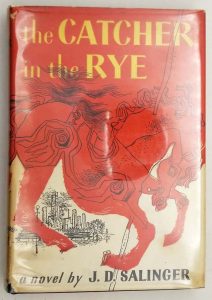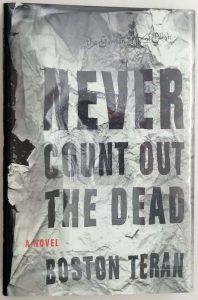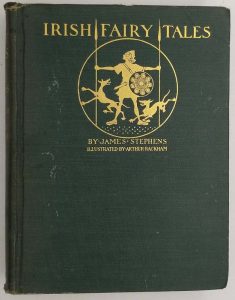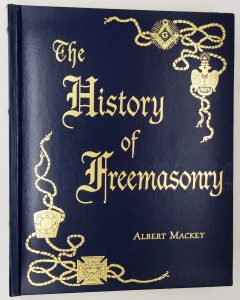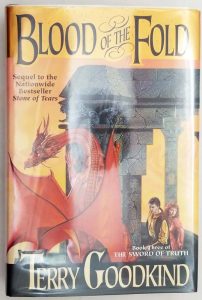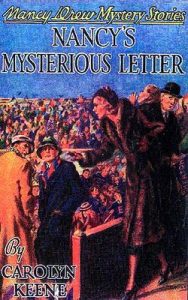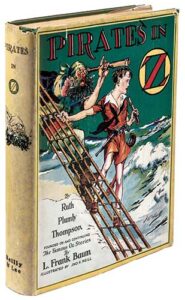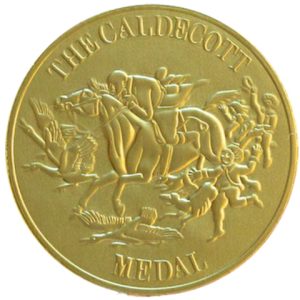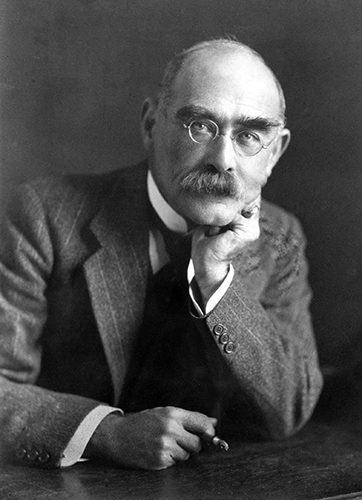
Joseph Rudyard Kipling (1865 – 1936) was an English journalist, short-story writer, poet, and novelist. He was born in India, which inspired much of his work.
Kipling’s works of fiction include The Jungle Book (1894), Kim (1901), and many short stories, including “The Man Who Would Be King” (1888). His poems include “Mandalay” (1890), “Gunga Din” (1890), “The Gods of the Copybook Headings” (1919), “The White Man’s Burden: The United States and the Philippine Islands” (1899), and “If—” (1910). He is seen as an innovator in the art of the short story. His children’s books are classics; one critic noted “a versatile and luminous narrative gift.”
Many older editions of Rudyard Kipling’s books have a swastika printed on the cover, associated with a picture of an elephant carrying a lotus flower, reflecting the influence of Indian culture. Kipling’s use of the swastika was based on the Indian sun symbol conferring good luck and the Sanskrit word meaning “fortunate” or “well-being”. He used the swastika symbol in both right and left-facing forms, and it was in general use by others at the time.
Once Adolf Hitler and the Nazis came to power and usurped the swastika, Kipling ordered that it should no longer adorn his books. Less than a year before his death, Kipling gave a speech (titled “An Undefended Island”) to the Royal Society of St George on 6 May 1935, warning of the danger which Nazi Germany posed to Britain.
Kipling in the late 19th and early 20th centuries was among the United Kingdom’s most popular writers. Henry James said “Kipling strikes me personally as the most complete man of genius, as distinct from fine intelligence, that I have ever known.” In 1907, he was awarded the Nobel Prize in Literature, as the first English-language writer to receive the prize, and at 41, its youngest recipient to date. He was also sounded out for the British Poet Laureateship and several times for a knighthood, but declined both. Following his death in 1936, his ashes were interred at Poets’ Corner, part of the South Transept of Westminster Abbey.
Rudyard Kipling – First Editions Identification Guide
This list only includes Kipling’s selected early major works, prior to 1902 and thus incomplete. Does not include his minor and later works. For his complete bibliography, please refer to the Reference section.
| Year | Title | Publisher | First edition/Printing Identification Points |
|---|---|---|---|
| 1886 | Departmental Ditties | N/A | First edition. Tan paper wrappers, representing an official envelope, with flap, tied with red tape. The flap bears a circular engraving in imitation of a seal, with a slit through which the red tape passes. ALSO: New York, M. F. Mansfield & A. Wessels. 1899. First American edition. Facsimile of the first edition, by the DeVinne Press. Limited to 250 copies. Except for title leaf, which is printed on Japan paper, and the absence of the seal and imprint on the flap, the rest of the book is an accurate facsimile of the first edition, cover and all. ALSO: Calcutta: Thacker, Spink and Co. 1886. Second edition. Gray boards, the front cover lettered and ornamented in red or blue. |
| 1888 | Plain Tales from the Hills | Calcutta: Thacker, Spink and Co., 1888 | First edition. Olive-green cloth, with an embossed picture of hills and plains, designed by J. L. Kipling, and lettering in black. The back is lettered in gilt and has the publisher’s monogram (T.S. & Co.). Two issues, priority as listed:
ALSO: London: Macmillan & Co, 1890. First English edition. Blue cloth. The last leaf of the contents is numbered “x. ” The last signature contains 3 leaves. The advertisements bound in at the end are of various dates, and are not a part of the book. |
| 1888 | Soldiers Three | Allahabad: “Pioneer” Press. 1888 | First edition. Greenish-gray paper wrappers. Indian Railway Library, No. 1. ALSO: A. H. Wheeler & Co., Allahabad. 1889. Second edition. Greenish-gray paper wrappers. ALSO: London: Sampson Low, Marston, Searle,& Rivington, Ltd., [1890]. First English edition. Notes: Two editions had been printed in India, and this first English edition may be called the third edition. It has the revised text, and was printed at Aberdeen. The cover has the design of the second Allahabad edition, slightly reduced, to make room for the London imprint below the plate, and the re-engraved cut on the back. This revised text was used for the first American edition published by John W. Lovell Co., 1890. |
| 1888 | The Story of the Gadsbys | A. H. Wheeler & Co., Allahabad, [1888] | First edition. Greenish-gray paper wrappers. Indian Railway Library, No. 2. ALSO: A. H. Wheeler & Co., Allahabad. 1889. Second edition. Greenish-gray paper wrappers. ALSO: A. H. Wheeler & Co. Allahabad Sampson Low, Marston, Searle, & Rivington, Ld. St. Dunstan’s House Fetter Lane, London, E. C. [1890]. First English edition. Notes: Another issue of the London and Allahabad edition has the same text, reset, paged 9-94 instead of 1-86. |
| 1888 | In Black and White | A. H. Wheeler & Co., Allahabad, [1888] | First edition. Cream-colored paper wrappers. Indian Railway Library, No. 3. ALSO: A. H. Wheeler & Co., Allahabad, 1889. Second edition. Cream-colored wrappers. Notes: The cover of the second edition, with the title dated 1889, was re-engraved, but is a very accurate copy of the first edition; the inscription “Mayo School of Art, Lahore” is, however, in smaller type than that shown in the reproduction. The later editions were issued in the greenish-gray paper wrappers. ALSO: A. H. Wheeler & Co. Allahabad Sampson Low, Marston, Searle, & Rivington, Ltd. St. Dunstan House Fetter Lane, London, E.C., [1890]. First English edition. |
| 1888 | Under the Deodars | A. H. Wheeler & Co., Allahabad, [1888] | First edition. Greenish-gray paper wrappers. Indian Railway Library, No. 4. ALSO: A. H. Wheeler & Co., Allahabad. 1889. Second edition. Greenish-gray paper wrappers. Note: A later issue, with the revised text, has on the cover the plate of the second edition, with “Mayo School of Art Lahore Mufid i am Press ” below it. ALSO: Wheeler & Co., Allahabad. Sampson Low, Marston, Searle & Rivington, Ld., St. Dunstan’s House Fetter Lane, London, E. C. [1890]. First English edition. |
| 1888 | The Phantom 'Rickshaw and other Eerie Tales | A. H. Wheeler & Co., Allahabad, [1888] | First edition. Greenish-gray paper wrappers. Indian Railway Library, No. 5. ALSO: A. H. Wheeler & Co., Allahabad. 1889. Second edition. Gray paper wrappers. ALSO: A. H. Wheeler & Co., Allahabad. Sampson Low, Marston, Searle & Rivington, Ld., St. Dunstan’s House, Fetter Lane, London, E. C., [1890]. First English edition. |
| 1888 | Wee Willie Winkie and Other Child Stories | A. H. Wheeler & Co., Allahabad, [1888] | First edition. Greenish-gray paper wrappers. Indian Railway Library, No. 6. Notes: The covers were retouched or reengraved at least five times. In the second issue of the cover, the types in the upper left corner are different from those of the first, periods are after the letters A and H, and “Mufid i am Press Lahore” is in smaller type. The third issue was reengraved and used also for the second edition. It has “Moyo [sic] School of Art, Lahore” in the place of “Mufid i am Press Lahore.” This error was corrected for the second issue and the third edition, and “Mayo School of Art, Lahore. Mufid i am Press” appears below the plate. ALSO: A. H. Wheeler & Co., Allahabad. 1889. Second edition. Greenish-gray paper wrappers. ALSO: A. H. Wheeler & Co. Allahabad Sampson Low, Marston, Searle & Rivington, Ld., St. Dunstan’s House Fetter Lane, London, E. C., [1890]. First English edition. |
| 1890 | The Courting of Dinah Shadd | New York: Harper & Brothers,1890 | First edition. Blue paper wrappers. Harper’s Franklin Square Library, No. 680. ALSO: New York: Harper & Brothers, [1890]. Second edition. Blue paper wrappers. The second edition contains only 177 pages instead of 182. The date, 1890, does not appear on the title-page. |
| 1890 | The Light that Failed | London J. B. Lippincott Co., 1890 | Copyright edition. Stone-gray paper wrappers, lettered from the types of the title-page. ALSO: W. Lovell Company, [1890]. First published edition. Dull-red paper wrappers, with the date on the front cover, December 5, 1890. Lovell’s Westminster Series, No. 25. Advertisement for Colgate on the back. ALSO: W. Lovell Company, [1890]. Second edition. Red cloth, the front cover and back lettered in gold, gilt top. Note: The earlier issue has advertisements at the end like those of the Westminster Series; the later issue omits "In Press by the Same Author”. ALSO: London: Macmillan & Co, 1891. First English edition. Red or blue cloth, untrimmed, the front cover lettered in gold. |
| 1891 | Life's Handicap | New York: Macmillan & Co., 1891 | American edition. Red or blue cloth. "“Robert Drummond, Electrotyper and Printer, New York ” stated on © page. ALSO: London: Macmillan & Co., 1891. English edition. Blue cloth. “ Printed by R. & R. Clark, Edinburgh” stated on © page. |
| 1891 | American Notes | New York: M. J. Ivers & Co.. [1891] | First edition. Paper wrappers. |
| 1891 | Letters of Marque | A. H. Wheeler & Co., Allahabad, 1891 | First edition. Red and blue cloth, separated and lettered diagonally. Note: This collection was suppressed by Kipling. One thousand copies were printed, of which 900 were supposed to have been destroyed. ALSO: London Sampson Low, Marston & Company Ltd., 1891. First English edition. Greenish-gray paper wrappers. Notes: The English edition of Letters of Marque, in two parts, at a shilling each, was to follow The City of Dreadful Night. |
| 1891 | Mine Own People | New York: United States Book Co., [1891] | First edition. Red cloth, top edges gilt. |
| 1892 | Barrack-Room Ballads | London: Methuen and Co., 1892 | First edition. Two issues, no priority: Limited edition of 225 copies on large paper and 30 on Japan paper. (B) Trade edition. Red cloth, untrimmed. ALSO: New York: Macmillan & Co., 1892. Red or blue cloth, untrimmed, top edges gilt. |
| 1892 | The Naulahka: A Story of West and East | London William Heinemann, MDCalcutta: Thacker, Spink and Co.,XCII | First edition. Salmon-colored cloth, untrimmed. ALSO: New York: Macmillan and Co., 1892. Second edition. Blue or red cloth, and later in slate-colored cloth with gold ornaments. |
| 1893 | Many Inventions | London: Macmillan & Co, 1893 | First edition. Blue cloth. ALSO: New York D. Appleton & Co., 1893. First American edition. Red cloth. |
| 1894 | The Jungle Book | London: Macmillan & Co, 1894 | First edition. Blue cloth, gilt edges, lettered and ornamented in gold. ALSO: New York: The Century Co., 1894 . First American edition. Green cloth, lettered and ornamented in gold, gilt top, other edges untrimmed. |
| 1895 | The Second Jungle Book | London: Macmillan & Co, 1895 | First edition. Blue cloth, ornamented and lettered in gold, gilt edges. ALSO: New York: The Century Co. , 1895. First American edition. Green cloth, lettered and ornamented in black and gold, or in terra-cotta cloth with blind stamped ornaments, lettered in gold; gilt top, other edges untrimmed. |
| 1896 | The Seven Seas | New York: D. Appleton & Co., 1896 | Copyright edition. Tan paper wrappers, the front cover lettered from the types of the title-page. Note: This was prepared for copyright purposes. ALSO: New York: D. Appleton & Co., 1896. First American edition. Gray cloth, lettered and ornamented in gold, untrimmed. ALSO: Muethen, London, 1896. First English edition. Two issues, no priority: (A) Limited edition of 150 copies on hand-made paper and 30 on Japan paper. (B) Trade edition. Red buckram, untrimmed. |
| 1896 | Captains Courageous | S.S. McClure, New York, [1897] | Copyright edition. Brown paper wrappers. Note: This is the earliest form of the story, of which there were only a very few copies prepared, to secure the copyright. ALSO: London: Macmillan & Co, 1897. First English edition. Blue cloth, lettered and ornamented in gold, gilt edges. ALSO: New York: The Century Co., 1897. First American edition. Green cloth, ornamented in red, gold, and green, lettered in gold, top edges gilt, other edges untrimmed. |
| 1897 | Almanac of Sports | London: Macmillan & Co, MDCalcutta: Thacker, Spink and Co.,XCVII | Copyright edition. Brown paper wrapper, the front cover lettered in black “Verses By Rudyard Kipling.” The wrapper is nearly an inch larger than the leaves within." Illustrated with 12 wood engravings bu William Nicholson. 20 copies printed. ALSO: London: William Heinemann, 1898. Folio. Buff boards, linen back, the front cover lettered and ornamented in black, the back cover ornamented in color, trimmed. Notes: A library edition was printed on Japanese vellum, bound in vellum with red edges or in cloth. A few copies were printed direct from the original wood blocks, hand-colored and signed by the artist. These are broadsides, plates and text, measuring 14 by 17 inches, laid in a folder tied with black ribbon. Several copies have been reported that have the colored plates of the English edition laid in the brown paper wrapper with the text of the American edition. ALSO: New York: R. H. Russell, 1898. First American edition. Small folio. Pictorial cloth. Note: The book was issued again in 1899, with the title-page dated 1900. The plates and verses are the same, but the calendar for 1900 is on a leaf at the end. |
| 1898 | The Day's Work | New York: Doubleday & McClure Co., 1898 | First American edition. Green cloth, untrimmed, gilt top. Note: The English edition was set up from the corrected proofs of the American edition; but the proofs were corrected a second time for the English edition, and a comparison shows many changes. ALSO: London: Macmillan & Co, 1898. First English edition. Blue cloth, gilt top. |
| 1898 | A Fleet in Being | London: Macmillan & Co, 1898 | First edition. Blue paper wrappers, a vignette of a warship, by N. Wilkinson, on the front cover. Later issues were bound in cloth. |
| 1899 | The Brushwood Boy | New York Doubleday & McClure Co., 1899 | First American edition. Dark-gray cloth with decorations in green and silver, lettered in gold, untrimmed, gilt top. ALSO: London: Macmillan & Co, 1907. First English edition. Cloth, lettered and ornamented in gold, gilt top. |
| 1899 | Stalky & Co. | New York Doubleday & McClure Co., 1899 | First American edition. Green cloth, untrimmed. ALSO: London: Macmillan & Co, 1899. Red cloth, gilt top. Notes: The two editions were issued about the same time. The English edition is not illustrated. |
| 1899 | From Sea to Sea and Other Sketches | New York Doubleday & McClure Co., 1899 | First American edition. Two volumes. Green cloth, two dolphins entwined blind-stamped on the front cover. ALSO: London: Macmillan & Co, 1900. Two volumes. First English edition. Red cloth, trimmed, gilt top. |
| 1901 | Kim | New York Doubleday, Page & Co., 1901 | First edition. Green cloth, untrimmed. Notes: The first American edition, published in September, 1901, was without the chapter headings. The second issue, containing the chapter headings that were used in the English edition, was published in October. ALSO: London: Macmillan & Co, 1901. Red cloth. First English edition. |
| 1902 | Just So Stories for Little Children | London: Macmillan & Co, 1902 | First edition. Red cloth, with animal design stamped in white/black on front/rear cover. ALSO: New York Doubleday, Page & Co., 1902. Red cloth, with animal design stamped in white/black on front/rear cover. |
Reference:
- Wikipedia
- Bibliography of the works of Rudyard Kipling, FLora V. Livingston, 1968
